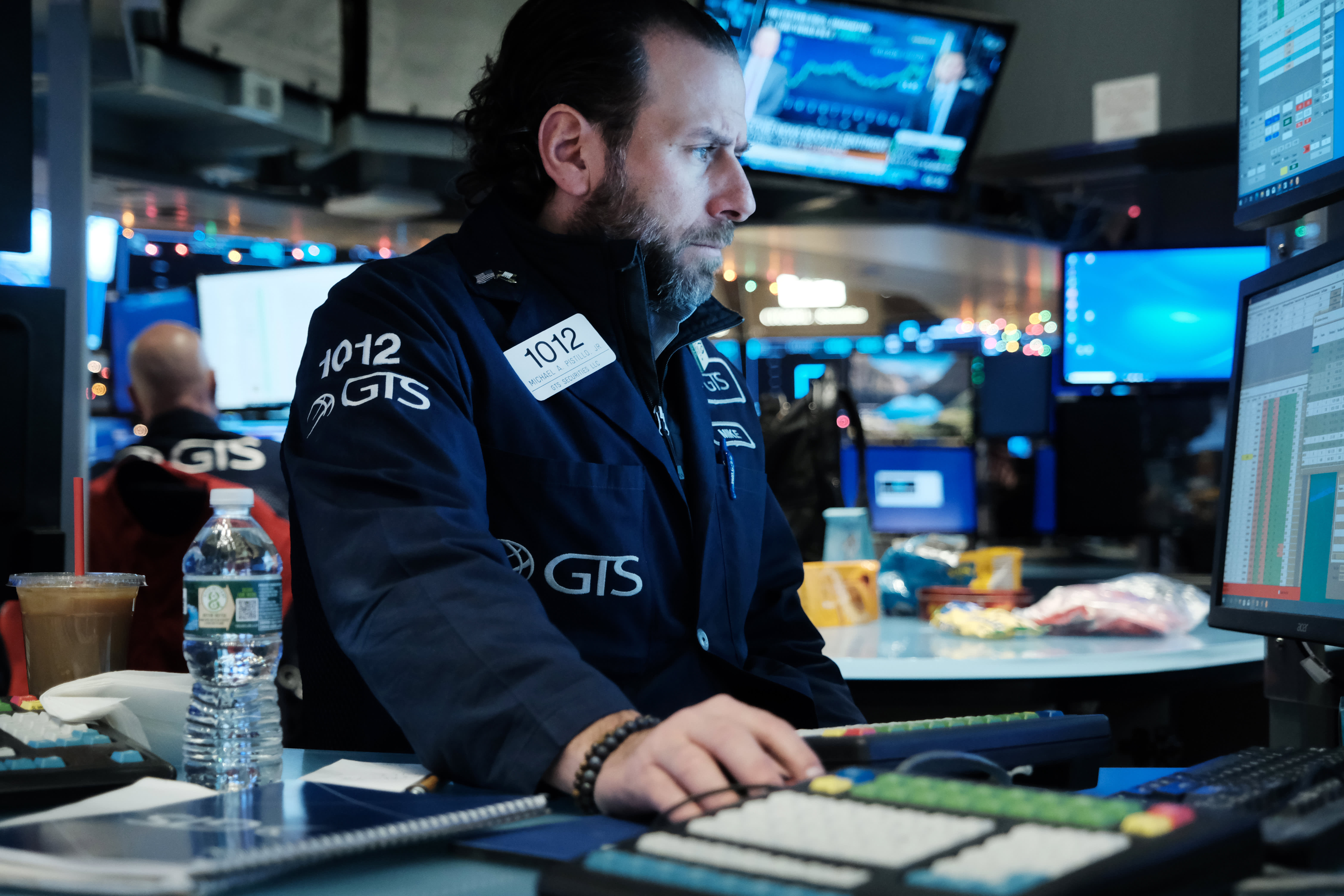Stocks are lower as investors digest this week’s rally, turn focus to economic data

U.S. stocks dipped on Thursday, after the major averages posted a third straight day of gains and traders took a pause as they awaited economic data on Friday.
The Dow Jones Industrial Average slid 32 points, or 0.09%. The S&P 500 and Nasdaq Composite fell 0.3% and 0.7% repectively.
Stocks were set to give back some of their gains in recent days, with the moves higher spurred by the belief that the omicron variant of Covid looks less severe than earlier forms.
Several travel-related stocks, which led the market higher throughout the week, were lower Thursday morning. Shares of Carnival fell 2%. United and Delta Air Lines were 1% lower, as were travel booking stocks like Expedia and Booking Holdings. The Invesco Dynamic Leisure and Entertainment ETF fell slightly. All are still on track to end the week higher, however.
Separately, shares of American Airlines fell 1.8% after the company said it’s reducing its schedule due to the fact that it’s still awaiting Boeing Dreamliner deliveries. Shares of Boeing slid more than 2%.
Rent The Runway shares tumbled by 12% after reporting swelling losses and lower than pre-pandemic subscriber growth for its most recent quarter. Electric vehicle maker Lucid saw shares fall 4% after announcing a $1.75 billion offering of convertible senior notes.
Still, there were some positive morning moves as well. CVS gained 2% after it issued upbeat guidance ahead of its Investor Day. Home retailer RH soared about 10% after it reported blowout earnings and lifted the low end of its revenue outlook.
The moves come a day ahead of important inflation news as the Labor Department on Friday releases the consumer price index for November. Economists surveyed by Dow Jones expect the year-over-year growth rate to be 6.7%. If that is the case, it will mark the biggest move since June 1982.
Federal Reserve officials are expected to react to the burst in inflation by announcing next week that the central bank will begin pulling back on its economic aid.
The first step will be accelerating the reduction in the central bank’s monthly bond purchases, with markets expecting the Fed to double the taper to $30 billion. That in turn could pave the way for interest rate hikes as soon as the spring of 2022 and mark the latest Fed policy pivot under Chairman Jerome Powell.
Markets already are expecting a high inflation reading, with some economists projecting the possibility that the headline number including food and energy could exceed 7%.
That in turn poses risks that the Fed will move more quickly than already anticipated.
“Another upside surprise to core inflation just ahead of the December meeting would likely add further conviction to a Fed that has recently become seemingly more focused on the price stability side of its mandate,” Citigroup economist Veronica Clark wrote. A stronger than expected print “could create an even greater sense of urgency for the Fed to react to high inflation through possibly earlier rate hikes.”
On Thursday the Labor Department reported initial claims for unemployment insurance totaled 184,000, compared to the 211,000 estimated by economists surveyed by Dow Jones.
During regular trading Wednesday, the Dow and S&P 500 advanced 0.1% and 0.3%, respectively, with each registering a third straight day of gains. The S&P’s gain over the last three days is the strongest of the year, according to MKM Partners.
The Nasdaq Composite advanced 0.64%, also registering a third day of gains. Apple had the most positive impact on the index, while Nvidia was the biggest drag.
Equities got a boost after Pfizer and BioNTech said Wednesday morning that a booster dose of their vaccine provides a high level of protection against the new omicron variant.
“The range of possibilities is still wide, but in the bigger picture, we think the odds are still very much in favor of the pandemic phase winding down,” Bank of America wrote in a note to clients following the announcement. “In our view, COVID is here to stay, but a shift to the endemic phase is approaching where infections are common but severe outcomes / lockdowns / travel restrictions are not,” the firm added.
Ed Moya, senior market analyst with Oanda, said that the market is in a wait-and-see mode ahead of Friday’s inflation report, which could “fuel further Fed rate hike bets.” Economists are expecting the report to show that prices rose 0.7% in November month-over-month, according to estimates from Dow Jones.
“While growth and labor markets have provided reasons to be optimistic about the economy, inflation is also running hot and sits at a 30-year high,” UBS wrote in a recent note to clients. “With the omicron variant entering the picture, investors are now questioning what monetary policy will look like going forward. The pandemic has already greatly increased the uncertainty over the economic outlook,” the firm added, noting that its base case is that the Fed will be patient.
There are some notable earnings reports on Thursday, including from Oracle, Broadcom and Lululemon, all of which report after the market closes.
— CNBC’s Jeff Cox contributed reporting.




